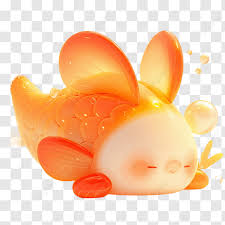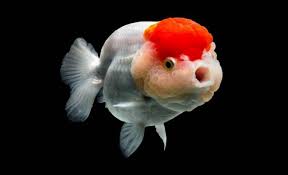Chinese tea is more than just a beverage—it’s a centuries-old tradition that embodies craftsmanship, nature, and health. Fresh Chinese teas such as green tea, white tea, and lightly oxidized oolongs are especially prized for their vibrant aroma, lively taste, and delicate freshness. However, improper storage can quickly rob these teas of their natural qualities.
In this article, we will explore the best practices for storing fresh Chinese tea, the factors that degrade its quality, and simple tips to help tea lovers retain the original fragrance, taste, and color of their treasured teas for as long as possible.
1. Understanding the Nature of Fresh Chinese Tea
Before diving into storage techniques, it’s important to understand why fresh Chinese tea requires special care.
Types of Fresh Chinese Tea
- Green Tea (绿茶) – Examples: Longjing (Dragon Well), Biluochun
- Fresh, grassy, and floral.
- White Tea (白茶) – Examples: Bai Hao Yinzhen (Silver Needle), Bai Mudan (White Peony)
- Mild, sweet, and subtle.
- Lightly Oxidized Oolong (青茶) – Examples: Tie Guan Yin (Iron Goddess), Baozhong
- Floral, creamy, and aromatic.
These teas are minimally processed, meaning they are highly sensitive to air, moisture, heat, light, and odors. They can lose their character rapidly without proper storage.
2. Enemies of Fresh Tea: What Causes Flavor Loss?
Several external factors contribute to the degradation of tea. Understanding them will help prevent mistakes that lead to staleness and flavor loss.
Air (Oxygen)
- Oxidation causes tea to lose its aroma and alters the natural enzymes, especially in green and white tea.
- Exposure to air can lead to a flat or bitter taste.
Moisture
- Tea is hygroscopic, meaning it absorbs moisture from the air. Even slight humidity can cause tea to grow mold or degrade faster.
- Damp tea becomes dull in flavor and may even rot.
Heat
- High temperatures accelerate chemical reactions, reducing freshness and fragrance.
- Tea stored near a stove, in a car, or under sunlight will deteriorate faster.
Light (UV Exposure)
- Sunlight can damage chlorophyll, alter pigments, and reduce antioxidants in tea.
- Light-exposed tea becomes pale and tasteless.
Odors
- Tea readily absorbs strong smells from its surroundings: spices, soap, garlic, or perfumes.
- This ruins the natural aroma, making it unpalatable.
Time
- Even with perfect storage, fresh teas lose vibrancy over time. Best consumed within:
- Green tea: 6–12 months
- White tea: 1–2 years
- Oolong: 6–18 months
3. General Guidelines for Storing Fresh Chinese Tea
To retain aroma and flavor, follow these essential guidelines:
A. Use Airtight Containers
- Choose double-sealed tins, vacuum-sealed bags, or ceramic jars with inner lids.
- Avoid using clear glass containers unless they are kept in dark cupboards.
- Don’t use plastic containers for long-term storage—they may leach odors or chemicals.
B. Store in a Cool, Dry Place
- Ideal storage temperature is between 10°C–25°C (50°F–77°F).
- Avoid refrigerators unless vacuum-sealed (more on this below).
- Keep tea away from stoves, ovens, windows, and heating vents.
C. Avoid Frequent Opening
- Every time you open the container, air and moisture enter.
- If you drink the tea regularly, divide it into smaller portions. Use one small jar for daily use and keep the rest sealed.
D. Keep Away from Odors
- Do not store tea near spices, coffee, cleaning agents, or cosmetics.
- Even a faint smell from the storage environment can alter the tea’s natural aroma.
4. Storage Tips by Tea Type
Different types of fresh Chinese tea have unique requirements.
A. Green Tea
Green tea is the most delicate and short-lived. To keep it fresh:
- Best Storage Method: Vacuum-sealed bag inside an opaque tin or ceramic jar.
- Shelf Life: 6–12 months, shorter if kept at room temperature.
- Refrigeration: Ideal, if properly vacuum-sealed and moisture-protected. Otherwise, condensation can ruin it.
- Note: Always let the container come to room temperature before opening after refrigeration to prevent moisture condensation.
B. White Tea
While subtle, white tea ages better than green tea.
- Best Storage Method: Airtight tin or jar lined with parchment paper.
- Shelf Life: Up to 2 years, though some aged white teas improve with time under careful conditions.
- Aging: Store in a cool, dark place for slow natural oxidation to develop depth and complexity.
C. Light Oolong Tea
Oolongs like Tie Guan Yin or Baozhong are partially oxidized and more stable than green teas but still require care.
- Best Storage Method: Vacuum-packed foil or double-sealed jar.
- Shelf Life: 1–2 years when stored away from light and moisture.
- Roasted oolongs (e.g., Wuyi rock tea) may last longer and develop richness over time.
5. Should You Refrigerate Fresh Tea? Pros and Cons
Many people wonder whether to refrigerate their fresh tea to keep it from spoiling. The answer depends on the packaging and environment.
Pros
- Refrigeration slows oxidation.
- Helps preserve aroma, especially in green tea.
Cons
- Risk of moisture condensation if improperly handled.
- Refrigerators contain strong odors from food that can be absorbed by tea.
How to Refrigerate Tea Safely
- Use vacuum-sealed aluminum foil bags or airtight tins.
- Place the package inside an odor-proof, airtight plastic box.
- Always let the container warm to room temperature before opening to prevent condensation.
6. Signs Your Tea Has Gone Stale
Even the best tea won’t last forever. Learn to recognize the signs of tea that has lost its aroma or flavor:
- Dull appearance – Leaves look faded or dusty.
- Weak or flat aroma – The fresh, fragrant notes are absent.
- Musty or sour smell – Indicates moisture damage or mold.
- Bitter or bland taste – Loss of complexity or natural sweetness.
- Colorless liquor – Pale tea with no vibrancy.
If you notice any of these signs, the tea may still be safe to drink, but the flavor experience will be disappointing.
7. Tips for Long-Term Tea Storage (Over One Year)
If you need to store tea for longer periods, consider the following advanced methods:
A. Mylar Bags with Oxygen Absorbers
- These prevent oxidation and light exposure.
- Ideal for serious collectors or bulk tea storage.
B. Ceramic Jars with Inner Lids
- Traditionally used in China for white tea aging.
- Regulates humidity and shields from light.
C. Controlled Environments
- Some tea collectors use tea storage cabinets or humidors with consistent temperature and humidity.
8. What Not to Do When Storing Fresh Tea
Avoid these common mistakes:
- Leaving tea in paper bags: Paper absorbs moisture and lets air in.
- Storing tea above the stove: Heat destroys freshness.
- Exposing to direct sunlight: UV rays fade the color and flavor.
- Using scented containers: Even clean plastic may have odors.
- Opening sealed packs too early: Oxygen begins degrading the tea once opened.
9. Traditional Chinese Wisdom on Tea Storage
In traditional Chinese tea culture, there’s a saying:
“One-third tea, two-thirds storage.”
It means tea quality depends not only on production, but also on how it is stored.
Tea masters often store rare teas in clay jars, bamboo boxes, or natural stone cellars to maintain proper aging conditions. While modern methods are more practical, the principle remains the same: preserve the original essence of the tea.
10. Final Thoughts: Making Aroma Last
Fresh Chinese teas are meant to be savored in their purest, most aromatic form. With proper storage, you can enjoy the vibrant flavor, enticing fragrance, and authentic character of your tea even months after purchase.
Here’s a quick recap of how to do it:
- Store in airtight, opaque containers.
- Keep away from air, moisture, light, heat, and odors.
- Use vacuum-sealed packaging if refrigerating.
- Consume within the recommended period, or divide into small portions to keep it fresh longer.
With these techniques, your cup of tea will always tell a fragrant and flavorful story—one sip at a time.










